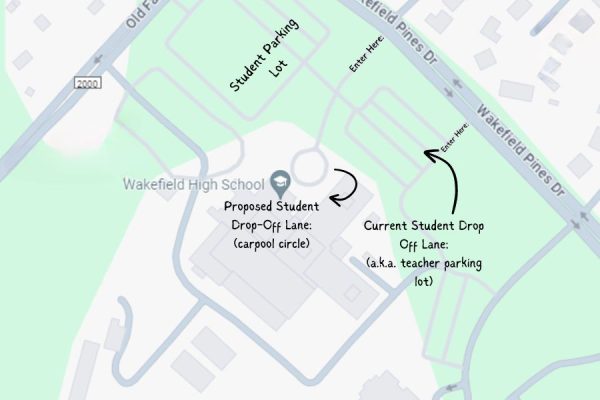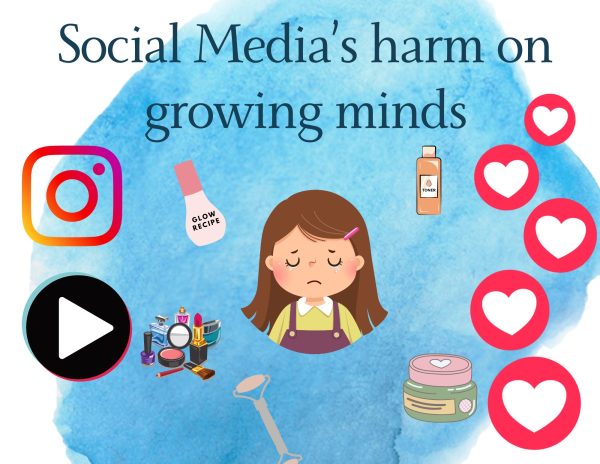Rigor and academic performance: a perspective for the bustling student
The challenges high school poses sometimes get the best of us; responsibilities seem to incessantly swarm over our heads. It may be helpful to take a step back and view the world in its vast glory.
A student decides whether to take the academic or AP route — one daunting decision high school students face.
After a long first week of grappling with my worries about this semester’s course load and rigor, I had a conversation with my mom Friday morning. She shared with me a perceptive lesson on appreciating how our unique talents contribute to humanity’s betterment. It’s important as young people to remind ourselves that Advanced Placement, or rigorous classes, grades and extracurriculars, don’t determine one’s personal value or role in the universe. As a way of stepping back from the pressures of high school and viewing life’s big picture, let us take a journey into the cosmos.
The size of an atom ranges from 1 to 5 angstroms; for reference, one angstrom is one ten-millionth of a meter. Engineers at Washington University estimate there are 100 trillion atoms in a human cell. Fascinatingly, there are thought to be 100 trillion cells in the human body.
Approximately 2,000 students attend Wakefield High School with 29 high schools in the Wake County Public School System total. The National Center for Education Statistics found 981 high schools in North Carolina as of 2016, including both public and private institutions. Also according to NCES, there were 24,181 public secondary schools in the U.S. during 2014-15. In the fall of this school year, 15.1 million students entered grades 9-12. The United States Census Bureau estimates the current world population to be roughly 7.5 billion people (and counting). Therefore, approximately 0.2013% of people on Earth are high school students in the United States of America.
Our future contributions, for example, matter more than a single test grade.
As we move out farther into the known universe, the diameter of our planet will provide a frame of reference. The Earth’s diameter is 7926 miles around the equator, which is almost three United States (measured horizontally). On average, the moon is about 240,000 miles away from Earth. For recent talk of colonizing Mars, I’ll note that the Red Planet maintains an average 140 million miles from Earth. Jupiter’s farthest distance from Earth is a whopping 601 million miles and the gas giant’s diameter is roughly 11 times that of Earth! Past the orbit of Neptune is the Kuiper belt — known for its trillions of icy comets — spanning 2.5 to 4.5 billion miles across. I’ve calculated that distance to be about 567,800 Earths (based on diameter). The north star, Polaris, resides at a distance of 323 light years from Earth and the sun — nearly 2,000 trillion miles. Our closest galactic neighbor, the Andromeda Galaxy, is 2.54 million light years away from Earth.
By this point, I think we can all agree on the enormity of our universe. “No one knows if the universe is infinitely large, or even if ours is the only universe that exists. And other parts of the universe, very far away, might be quite different from the universe closer to home,” NASA explains on its website. In 2003, the WMAP satellite captured an image of the most distant place in the universe we can observe. NASA describes it as both the oldest and youngest picture in existence. Light traveled for 14 billion years to reach us in this photo — making it the oldest. Simultaneously, it’s the youngest image because the light emitted came from a much younger universe. Stars and galaxies had yet to form.
My intention isn’t to undermine the endeavors of adolescent life; all the responsibilities and standards placed on high school students play a pivotal role in personal growth. How we view such challenges, though, are of equal importance. The universe — as I’ve expressed — is an immense and intricate place; therefore, we should recognize that these arduous years aren’t the extent of our world. From the atom to faraway galaxies, so many phenomena wait for humanity’s ingenuity. Our future contributions, for example, matter more than a single test grade. In the end, all lives serve a purpose in the journey to the cosmos.














